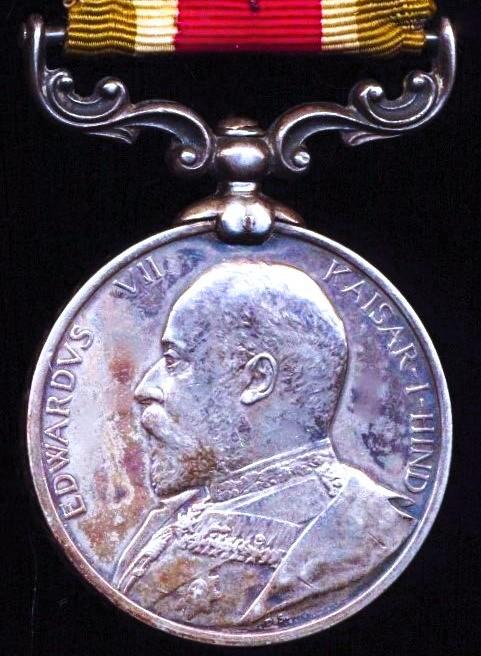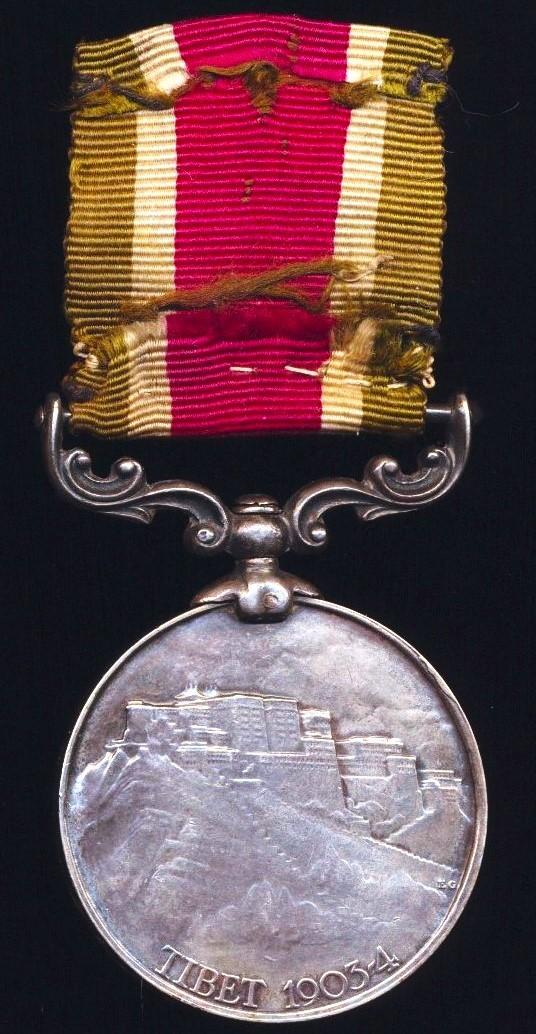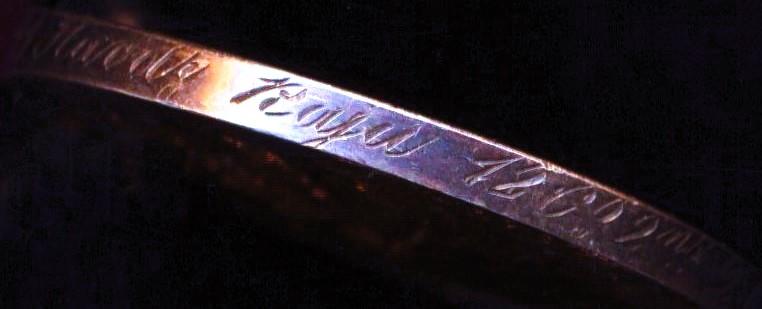Tibet Medal 1903-04. Silver issue. No clasp (1491 Havdr Raju 12 Co 2nd Q.O. S. & M.)
The recipient was an Indian soldier of the Hindu faith holding the rank of while serving with the 12th Company Queens Own Sappers & Miners, of the British Indian Army
Tibet Campaign 1903-04 a.k.a 'The Engineers War': The British incursion into Tibet, under the guise of the 'Younghusband Expedition', remains unique in the annals of British military history, as the campaign fought at the 'Highest Altitude' by the British. The British force was overwhelmingly drawn from the Indian Army, with only the 1st Battalion Royal Fusiliers deployed as the token British infantry regiment present from the British Army. Not withstanding the immense geographic obstacles the British had to face (high altitude, lack of roads, freezing weather and the mountains - before Lhasa could be reached it was necessary to cross four ranges of mountains by passes between 14,000 and 17,000 feet in height), awaiting them in the field was a Tibetan Army of 16,000 men, poorly armed but strongly posted in fortified localities and commanded by a Chinese Amban of Tibet
The 4th Company,3 Madras Sappers and Miners, had been working on the Rangpo-Ganfok road in Sikkim since April, 1903, assisted for a time by the 23rd and 32nd Sikh Pioneers, and these units joined Younghusband Js military escort, the composition of which is worthy of note. It included a battery of Mountain Artillery, a couple of machine-guns, the 3rd Company, Bengal Sappers and Miners, under Captain S. H. Sheppard, R.E., the 1 2th Company, Madras Sappers and Miners, under Major C, H. Heycock, R.E., a company of mounted infantry, the 23rd and 32nd Sikh Pioneers, and the 8th Gurkhas. Of its 3,000 fighting men, more than two- thirds were Engineers, Sappers or Pioneers, and it was commanded by a Royal Engineer in the person of Major (temporary Brigadier-General) J. R. L. Macdonald. The pre¬ponderance of Sapper and Pioneer troops, and the size of the Engineer cadre, justify the title of " an Engineer War ” for the expedition into Tibet
During the Tibetan Expedition every Indian soldier of the Queens Own Madras Sapper and Miners was issued with a long sheepskin overcoat {poshteen}, a quilted rug (rezai), fur-lined gloves, two lambskin vests, quilted overalls, extra socks, felt knee-boots, comforter and goggles. During the expedition it was found necessary to fill the maxim-gun water-jackets with a mixture of water, rum and kerosene, as pure water froze hard. (The addition of kerosene oil to the rum is easily accounted for !) No lubricating oil could be used on the locks of rifles and maxims as it also froze
An extremely hard earned - and desirable - campaign medal
The medal retaining a piece of the original silk medal riband, this fitted and stitched
Condition: Toned GVF
Code: 23620







